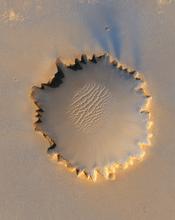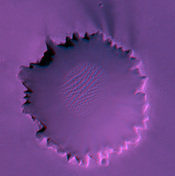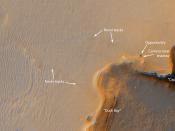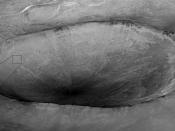After spending 21 Earth months creeping across the desolate surface of the Red Planet, a NASA rover has reached its destination.
'Opportunity' is now perched on the edge of a massive jagged-edged crater, capturing spectacular high resolution images and beaming them back to earth, allowing scientists to chart a path into the depression. NASA hopes the rover's journey into the Victoria crater, which scientists say is several times the size of an NFL-sized stadium, will provide a glimpse into the planet's history.
"The bottom line is it gives us a window to the past of the planet, and that's incredibly important in understanding why it is the way it is and understanding relationships potentially to other rocky planets in the solar system," said Doug McCuistion, director of NASA's Mars exploration program in a news conference.
Opportunity will have help from above as it prepares for the descent into Victoria.
It will be working in cooperation with the Mars Reconnaissance Orbiter which arrived at Mars in March of last year, but has only now begun to activate its instruments and send images back to Earth.
The high-resolution pictures Opportunity captures from the surface and those taken from above as the MRO orbits the planet will provide scientists with the most detailed look at the Martian landscape so far.
One of the most poignant images already released by NASA reveals the tiny rover perched on the edge of the giant crater.
"This is a tremendous example of how our Mars missions in orbit and on the surface are designed to reinforce each other and expand our ability to explore and discover," McCuistion said.
Before the rover begins its journey into the crater it will continue to scout around the rim, collecting more images. Operators on Earth will then compare the rover images with those from the MRP to determine the safest route down.
"If you were a geologist driving up to the edge of a crater in your jeep, the first thing you would do would be to pick up the aerial photo you brought with you and use it to understand what you're seeing from ground level. That's exactly what we're doing here," said Steve Squyres, principal investigator on the rover program.
One of the questions scientists will be mulling over is whether Opportunity will be able to make its way back out of Victoria.
According to NASA's website, the crater has high walls with layers of exposed rock. Scientists hope the journey into the crater will reveal new information about the planet's geological past.
NASA is in a hurry to begin the exploration, because both Opportunity and a second rover also on Mars have outlived their three-month design life by a factor of 10, and a failure could take place at any moment.





